Chaucer's Riddle
Chaucer's poem is a fable of a fox and a cockerel in which the sly fox first catches the cockerel by appealing to his vanity, but is finally outwitted by the bird who escapes. The fox is described in the following lines:
- A col-fox, ful of sly iniquitee...
- As gladly doon thise homicydes alle,
- That in awayt liggen to mordre men.
- O false mordrer, lurking in thy den!
Shakespearean scholar J Leslie Hotson (1897–1992) published Nicholas Colfox's story in PMLA XXXIX 1924, explaining Chaucer's use of his unusual name, not appearing elsewhere in English literature. He traced Nicholas's Parliamentary denouncement, the petition by the then knighted Sir Nicholas Colfox and his subsequent pardon in 1404 (available online from the British Library).
Hotson's thesis, entitled Colfox vs Chauntecleer, is that Chaucer's Nun's Priest's Tale is an allegory for the murder of Thomas of Woodstock by Nicholas Colfox and a coded accusation against both Colfox's employer, Thomas Mowbray and the latter's rival, Henry Bolingbroke. According to Hotson, Chauntecleer - the cockerel in the allegory - is described in colours unknown to any breed of cockerel but which coincide with Bolingbroke's coat of arms, as worn at his famous trial by combat against Mowbray. [2] Scholars have criticised Hotson's theory by suggesting that Chauntecleer's colours are in fact similar to those of the Golden Spangled Hamburg cockerel, though Hamburgs do not have a black beak. Modern critics do not all reject Hotson's allegory theory, but believe that Chaucer's long version of the fable is written on many different levels of meaning.
Year 1399 (MCCCXCIX) was a common year starting on Wednesday of the Julian calendar.
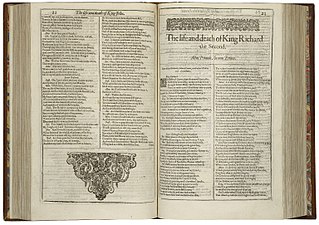
The Life and Death of King Richard the Second, commonly called Richard II, is a history play by William Shakespeare believed to have been written in approximately 1595. It is based on the life of King Richard II of England and is the first part of a tetralogy, referred to by some scholars as the Henriad, followed by three plays concerning Richard's successors: Henry IV, Part 1; Henry IV, Part 2; and Henry V.

John Howard, 1st Duke of Norfolk, was an English nobleman, soldier, politician, and the first Howard Duke of Norfolk. He was a close friend and loyal supporter of King Richard III, with whom he was slain at the Battle of Bosworth in 1485.
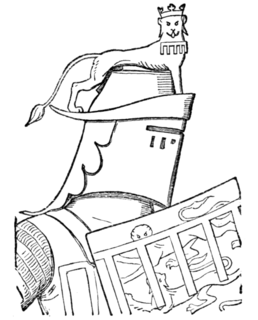
Thomas de Mowbray, 1st Duke of Norfolk, 1st Earl of Nottingham, 3rd Earl of Norfolk, 6th Baron Mowbray, 7th Baron Segrave, KG, Earl Marshal was an English peer. As a result of his involvement in the power struggles which led up to the fall of Richard II, he was banished and died in exile in Venice.
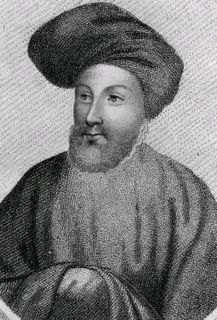
Edward, 2nd Duke of York,, was an English nobleman and magnate, the eldest son of Edmund of Langley, 1st Duke of York, and a grandson of King Edward III of England. He held significant appointments during the reigns of Richard II, Henry IV, and Henry V, and is also known for his translation of the hunting treatise The Master of Game. He was slain at the Battle of Agincourt, one of the principal military engagements of the Hundred Years' War against France, in 1415.

Thomas of Woodstock, 1st Duke of Gloucester was the fifth surviving son and youngest child of King Edward III of England and Philippa of Hainault.
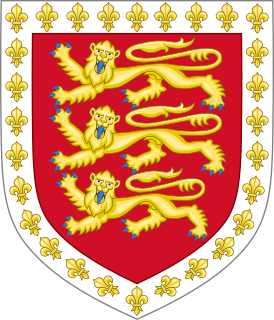
John Holland, 1st Duke of Exeter, 1st Earl of Huntingdon, KG, of Dartington Hall in Devon, was a half-brother of King Richard II (1377–1399), to whom he remained strongly loyal. He is primarily remembered for being suspected of assisting in the downfall of King Richard's uncle Thomas of Woodstock, 1st Duke of Gloucester (1355–1397) and then for conspiring against King Richard's first cousin and eventual deposer, Henry Bolingbroke, later King Henry IV (1399–1413).
Duke of Hereford was a title in the Peerage of England. It was created in 1397 for Richard II's cousin, Henry Bolingbroke, due to his support for the King in his struggle against their uncle Thomas of Woodstock, 1st Duke of Gloucester. It merged in the crown on Henry's usurpation two years later, and has never since been recreated.
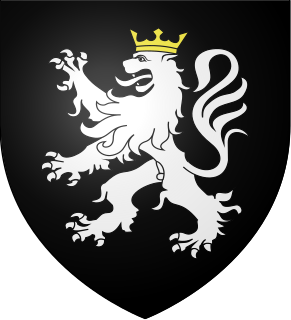
Baron Segrave (Seagrave) is a title in the Peerage of England. It was created by writ in 1295 for Nicholas de Segrave, and the title is drawn from a village in Leicestershire now spelled Seagrave.

The Lords Appellant were a group of nobles in the reign of King Richard II, who, in 1388, sought to impeach some five of the King's favourites in order to restrain what was seen as tyrannical and capricious rule. The word appellant simply means '[one who is] appealing [in a legal sense]'. It is the older (Norman) French form of the present participle of the verb appeler, the equivalent of the English 'to appeal'. The group was called the Lords Appellant because its members invoked a procedure under law to start prosecution of the king's unpopular favourites known as 'an appeal': the favourites were charged in a document called an appeal of treason, a device borrowed from civil law which led to some procedural complications.

John Mowbray, 3rd Duke of Norfolk, KG, Earl Marshal was a fifteenth-century English magnate who, despite having a relatively short political career, played a significant role in the early years of the Wars of the Roses. Mowbray was born in 1415, the only son and heir of John de Mowbray, 2nd Duke of Norfolk, and Katherine Neville. He inherited his titles upon his father's death in 1432. As a minor he became a ward of King Henry VI and was placed under the protection of Humphrey, Duke of Gloucester, alongside whom Mowbray would later campaign in France. He seems to have had an unruly and rebellious youth. Although the details of his misconducts are unknown, they were severe enough for the King to place strictures upon him and separate him from his followers. Mowbray's early career was spent in the military, where he held the wartime office of Earl Marshal. Later he led the defence of England's possessions in Normandy during the Hundred Years' War. He fought in Calais in 1436, and during 1437–38 served as warden of the east march on the Anglo-Scottish border, before returning to Calais.

Anne of Gloucester, Countess of Stafford was the eldest daughter of Thomas of Woodstock, 1st Duke of Gloucester, by his wife Eleanor de Bohun, one of the two daughters and co-heiresses of Humphrey de Bohun, 7th Earl of Hereford, 6th Earl of Essex (1341–1373) of Pleshy Castle in Essex.
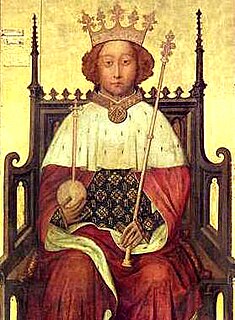
The Merciless Parliament was an English parliamentary session lasting from 3 February to 4 June 1388, at which many members of King Richard II's court were convicted of treason. The session was preceded by a period in which Richard's power was revoked and the kingdom placed under the regency of the Lords Appellant. Richard had launched an abortive military attempt to overthrow the Lords Appellant and negotiate peace with the kingdom of France so he could focus all his resources against his domestic enemies. The Lords Appellant counteracted the attempt and called the Parliamentary session to expose his attempts to make peace. Parliament reacted with hostility and convicted almost all of Richard's advisers of treason. Most were executed and a few exiled. Parliament was dissolved after violence broke out in Kent and the Duke of York and his allies began objecting to some executions. The term "merciless" was coined by Augustinian chronicler Henry Knighton.
The Chief Butler of England is an office of Grand Sergeanty associated with the feudal Manor of Kenninghall in Norfolk. The office requires service to be provided to the Monarch at the Coronation, in this case the service of Pincera Regis, or Chief Butler at the Coronation banquet.
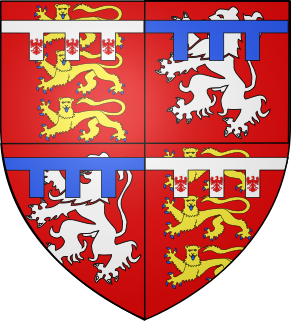
Thomas de Mowbray, 4th Earl of Norfolk, 2nd Earl of Nottingham, 8th Baron Segrave, 7th Baron Mowbray, English nobleman and rebel, was the son of Thomas de Mowbray, 1st Duke of Norfolk and Lady Elizabeth FitzAlan.

Sir William Philip Colfox, 1st Baronet, MC, DL, JP was an English soldier, farmer and Conservative Party politician.
John Leslie Hotson, commonly known as Leslie Hotson or J. Leslie Hotson was a scholar of Elizabethan literary puzzles.
Events from the 1390s in England.
Sir William Bagot was a politician and administrator under Richard II.













